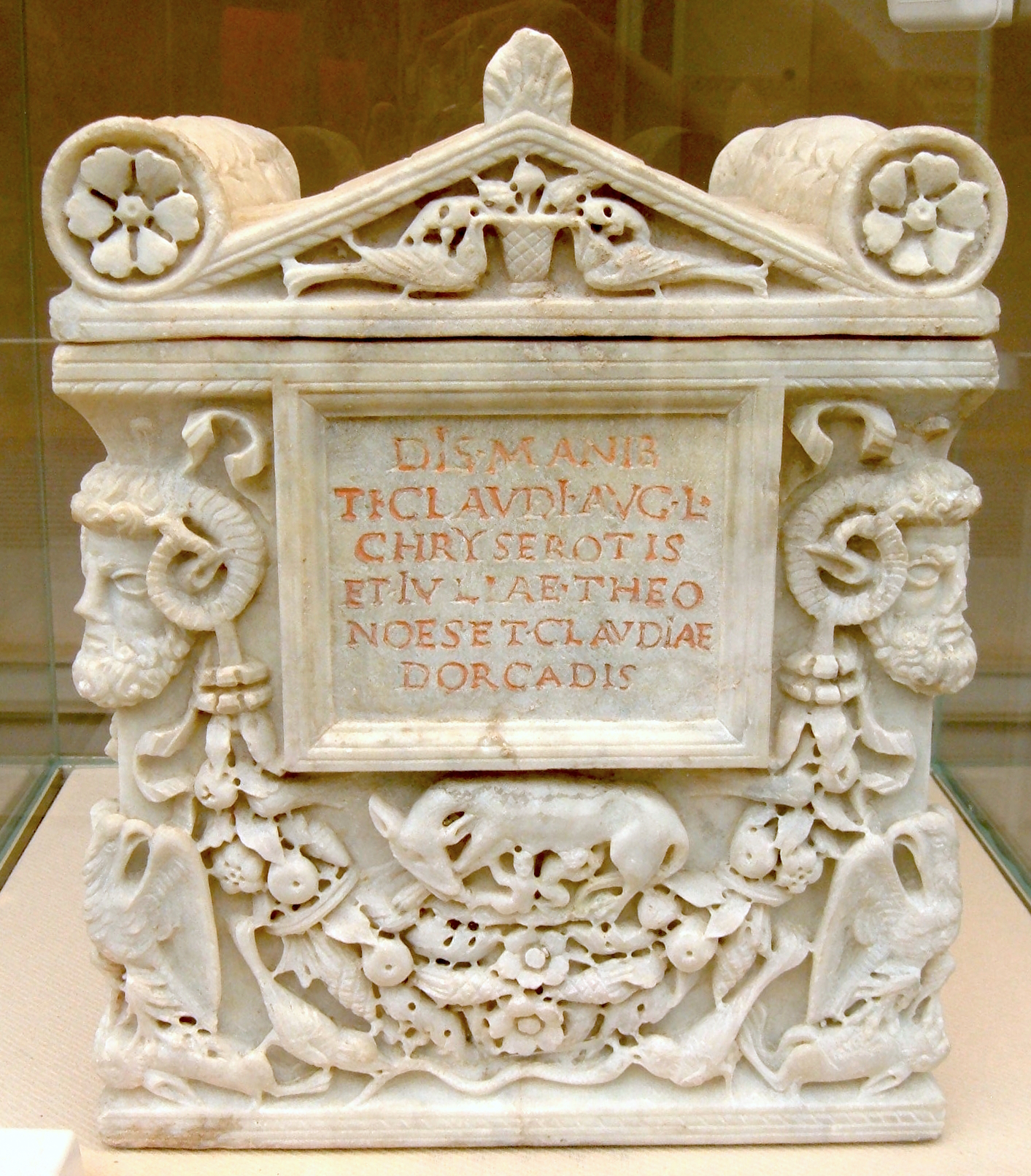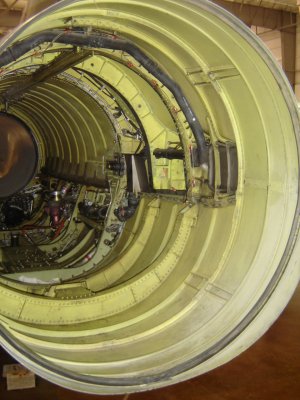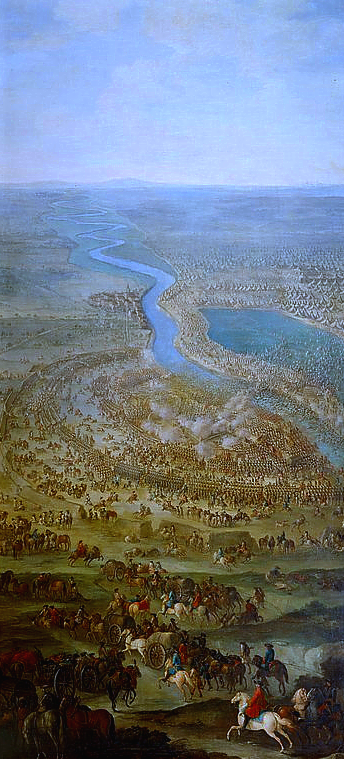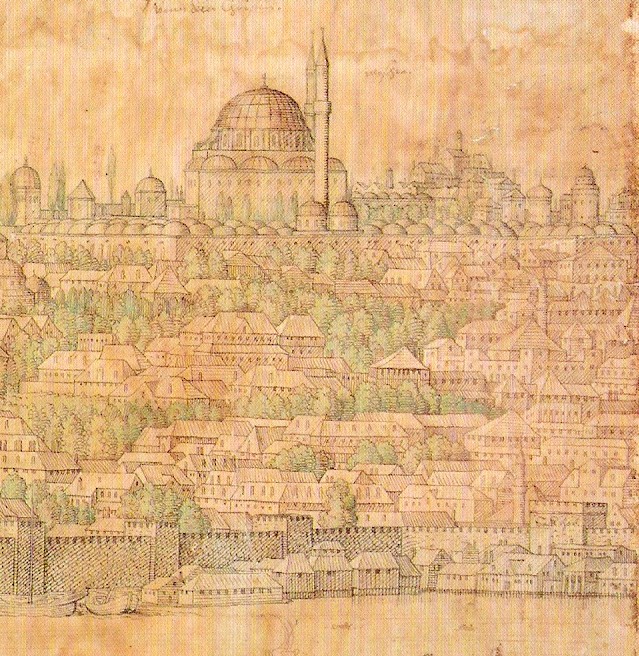|
Atik Sinan
Sinan-i Atik, also known as Azadlı Sinan, and Atik Sinan (meaning Sinan the Freedman; ''azadlı'' shows that ''atik'' does not mean "old", and is not used to distinguish him from Koca Mimar Sinan Agha), was an Ottoman architect for Sultan Mehmed II from the empire's Greek community during the 15th century. Biography He is credited with being the architect who designed and built Istanbul's first selatin mosque, the Fatih Mosque and its complex, in 1471 for Mehmed II, over the ruins of the Church of the Holy Apostles, which was razed to the ground by the Ottomans in order for the Fatih Mosque to be built.Van Millingen, Alexander (1912). Byzantine Churches of Constantinople. London: MacMillan & Co., p. 276. His nephew, also an architect, built the Bayezid II Mosque. Tradition holds that Sultan Mehmed II endowed the Greek Orthodox Church of St. Mary of the Mongols, the only church in Istanbul still standing that was never converted into a mosque, to the mother of Christodoulos ... [...More Info...] [...Related Items...] OR: [Wikipedia] [Google] [Baidu] |
Freedman
A freedman or freedwoman is a formerly enslaved person who has been released from slavery, usually by legal means. Historically, enslaved people were freed by manumission (granted freedom by their captor-owners), emancipation (granted freedom as part of a larger group), or self-purchase. A fugitive slave is a person who escaped enslavement by fleeing. Ancient Rome Rome differed from Greek city-states in allowing freed slaves to become plebeian citizens. The act of freeing a slave was called ''manumissio'', from ''manus'', "hand" (in the sense of holding or possessing something), and ''missio'', the act of releasing. After manumission, a slave who had belonged to a Roman citizen enjoyed not only passive freedom from ownership, but active political freedom ''(libertas)'', including the right to vote. A slave who had acquired ''libertas'' was known as a ''libertus'' ("freed person", feminine ''liberta'') in relation to his former master, who was called his or her patron ... [...More Info...] [...Related Items...] OR: [Wikipedia] [Google] [Baidu] |
Ahmed III
Ahmed III ( ota, احمد ثالث, ''Aḥmed-i sālis'') was Sultan of the Ottoman Empire and a son of Sultan Mehmed IV (r. 1648–1687). His mother was Gülnuş Sultan, originally named Evmania Voria, who was an ethnic Greek. He was born at Hacıoğlu Pazarcık, in Dobruja. He succeeded to the throne in 1703 on the abdication of his brother Mustafa II (1695–1703). Nevşehirli Damat İbrahim Pasha and the Sultan's daughter, Fatma Sultan (wife of the former) directed the government from 1718 to 1730, a period referred to as the ''Tulip Era''. The first days of Ahmed III's reign passed with efforts to appease the janissaries who were completely disciplined. However, he was not effective against the janissaries who made him sultan. Çorlulu Ali Pasha, who Ahmed brought to the Grand Vizier, tried to help him in administrative matters, made new arrangements for the treasury and Sultan. He supported Ahmed in his fight with his rivals. Early life and education Sultan Ahmed ... [...More Info...] [...Related Items...] OR: [Wikipedia] [Google] [Baidu] |
Year Of Birth Unknown
A year or annus is the orbital period of a planetary body, for example, the Earth, moving in its orbit around the Sun. Due to the Earth's axial tilt, the course of a year sees the passing of the seasons, marked by change in weather, the hours of daylight, and, consequently, vegetation and soil fertility. In temperate and subpolar regions around the planet, four seasons are generally recognized: spring, summer, autumn and winter. In tropical and subtropical regions, several geographical sectors do not present defined seasons; but in the seasonal tropics, the annual wet and dry seasons are recognized and tracked. A calendar year is an approximation of the number of days of the Earth's orbital period, as counted in a given calendar. The Gregorian calendar, or modern calendar, presents its calendar year to be either a common year of 365 days or a leap year of 366 days, as do the Julian calendars. For the Gregorian calendar, the average length of the calendar year ... [...More Info...] [...Related Items...] OR: [Wikipedia] [Google] [Baidu] |
Architects From The Ottoman Empire
An architect is a person who plans, designs and oversees the construction of buildings. To practice architecture means to provide services in connection with the design of buildings and the space within the site surrounding the buildings that have human occupancy or use as their principal purpose. Etymologically, the term architect derives from the Latin ''architectus'', which derives from the Greek (''arkhi-'', chief + ''tekton'', builder), i.e., chief builder. The professional requirements for architects vary from place to place. An architect's decisions affect public safety, and thus the architect must undergo specialized training consisting of advanced education and a ''practicum'' (or internship) for practical experience to earn a license to practice architecture. Practical, technical, and academic requirements for becoming an architect vary by jurisdiction, though the formal study of architecture in academic institutions has played a pivotal role in the development of the ... [...More Info...] [...Related Items...] OR: [Wikipedia] [Google] [Baidu] |
Former Greek Orthodox Christians
A former is an object, such as a template, gauge or cutting die, which is used to form something such as a boat's hull. Typically, a former gives shape to a structure that may have complex curvature. A former may become an integral part of the finished structure, as in an aircraft fuselage, or it may be removable, being using in the construction process and then discarded or re-used. Aircraft formers Formers are used in the construction of aircraft fuselage, of which a typical fuselage has a series from the nose to the empennage, typically perpendicular to the longitudinal axis of the aircraft. The primary purpose of formers is to establish the shape of the fuselage and reduce the column length of stringers to prevent instability. Formers are typically attached to longerons, which support the skin of the aircraft. The "former-and-longeron" technique (also called stations and stringers) was adopted from boat construction, and was typical of light aircraft built until the ... [...More Info...] [...Related Items...] OR: [Wikipedia] [Google] [Baidu] |
Converts To Islam From Eastern Orthodoxy
Religious conversion is the adoption of a set of beliefs identified with one particular religious denomination to the exclusion of others. Thus "religious conversion" would describe the abandoning of adherence to one denomination and affiliating with another. This might be from one to another denomination within the same religion, for example, from Baptist to Catholic Christianity or from Sunni Islam to Shi’a Islam. In some cases, religious conversion "marks a transformation of religious identity and is symbolized by special rituals". People convert to a different religion for various reasons, including active conversion by free choice due to a change in beliefs, secondary conversion, deathbed conversion, conversion for convenience, marital conversion, and forced conversion. Proselytism is the act of attempting to convert by persuasion another individual from a different religion or belief system. Apostate is a term used by members of a religion or denomination to refer ... [...More Info...] [...Related Items...] OR: [Wikipedia] [Google] [Baidu] |
1471 Deaths
Year 1471 ( MCDLXXI) was a common year starting on Tuesday (link will display the full calendar) of the Julian calendar. Events January–December * January – Portuguese navigators João de Santarém and Pedro Escobar reach the gold-trading centre of Elmina on the Gold Coast of west Africa. and explore Cape St. Catherine, two degrees south of the equator, so that they begin to be guided by the Southern Cross constellation. They also visit Sassandra on the Ivory Coast. * March 1 – Emperor Lê Thánh Tông captures the Champa capital, establishing new regions in middle Vietnam. * March – The Yorkist King Edward IV returns to England to reclaim his throne. * April 14 – Battle of Barnet: Edward defeats the Lancastrian army under Warwick, who is killed. * May 4 – Battle of Tewkesbury: King Edward defeats a Lancastrian army under Queen Margaret and her son, Edward of Westminster the Prince of Wales, who is killed. * May 21 – King ... [...More Info...] [...Related Items...] OR: [Wikipedia] [Google] [Baidu] |
Madrasa
Madrasa (, also , ; Arabic: مدرسة , pl. , ) is the Arabic word for any type of educational institution, secular or religious (of any religion), whether for elementary instruction or higher learning. The word is variously transliterated '' Madrasah arifah'', ''medresa'', ''madrassa'', ''madraza'', ''medrese'', etc. In countries outside the Arab world, the word usually refers to a specific type of religious school or college for the study of the religion of Islam, though this may not be the only subject studied. In an architectural and historical context, the term generally refers to a particular kind of institution in the historic Muslim world which primarily taught Islamic law and jurisprudence (''fiqh''), as well as other subjects on occasion. The origin of this type of institution is widely credited to Nizam al-Mulk, a vizier under the Seljuks in the 11th century, who was responsible for building the first network of official madrasas in Iran, Mesopotamia, and Khor ... [...More Info...] [...Related Items...] OR: [Wikipedia] [Google] [Baidu] |
Sultan Mustafa II
Mustafa II (; ota, مصطفى ثانى ''Muṣṭafā-yi sānī''; 6 February 1664 – 29 December 1703) was the Sultan of the Ottoman Empire from 1695 to 1703. Early life He was born at Edirne Palace on 6 February 1664. He was the son of Sultan Mehmed IV (1648–87) and Gülnuş Sultan, originally named Evmenia, who was of Greek Cretan descent. Mustafa II abdicated in favor of his brother Ahmed III (1703–30) in 1703. Born in Edirne, Mustafa's childhood passed here. While he was in Mora Yenişehiri with his father in 1669, he took the first lesson from Mehmed Efendi at the bed-i besinele ceremony. The writing teacher was the famous calligrapher Hafiz Osman. In 1675, he and his brother Ahmed were circumcised and his sisters Hatice Sultan and Fatma Sultan were married. The celebration lasted 20 days. Reign Great Turkish War During his reign the Great Turkish War, which had started in 1683, was still going on. After the failure of the second Siege of Vienna (1683) the Hol ... [...More Info...] [...Related Items...] OR: [Wikipedia] [Google] [Baidu] |
1766 Istanbul Earthquake
The 1766 Istanbul earthquake was a strong earthquake with epicenter in the eastern part of the Sea of Marmara, in the Çınarcık Basin (or near the Princes' Islands, north of the basin) which occurred in the early hours of Thursday morning, 22 May 1766. The earthquake had an estimated magnitude of 7.1 on the surface wave magnitude scale, and caused effects in a vast area extending from Izmit to Rodosto (now Tekirdağ). In this area, the earthquake was followed by a tsunami which caused significant damage. The earthquake of 1766 was the last major earthquake to rock Constantinople (now known in English under its Turkish name, Istanbul) because of a rupture of the North Anatolian Fault in the Marmara region. Geology The Sea of Marmara is a pull-apart basin formed at a releasing bend in the North Anatolian Fault ("NAF"), a right-lateral strike-slip fault. East of the Sea of Marmara the NAF splits in three major branches; while the sinuous southern branch goes inland in directio ... [...More Info...] [...Related Items...] OR: [Wikipedia] [Google] [Baidu] |





.jpg)


